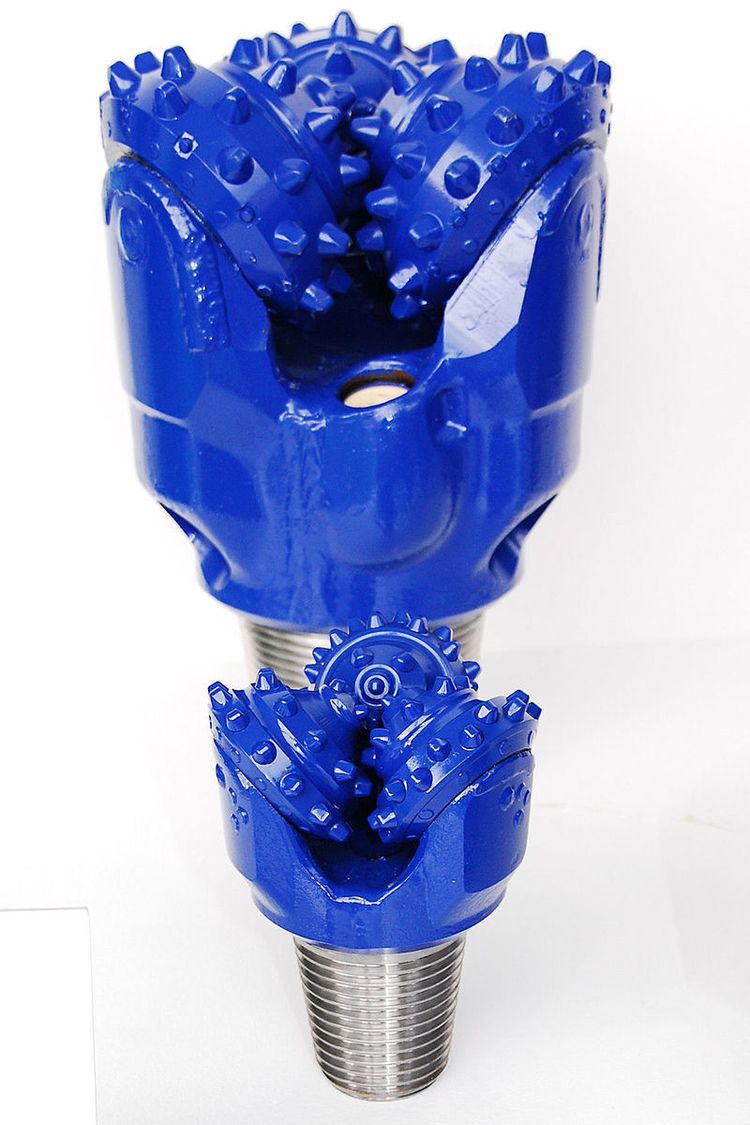 | ||
A roller-cone bit is a drill bit used for drilling through rock, for example when drilling for oil and gas.
Characteristics
The bits are sub divided into different categories depending on soil condition. There are three main categories: soft, medium and hard formation bits. Soft formation rock bits are used in unconsolidated sands, clays, soft lime stones, red beds and shale. Medium formation bits are used in calcites, dolomites, lime stones, and hard shale, while hard formation bits are used in hard shale, calcites, mudstones, cherty lime stones and hard and abrasive formations.
The cutting structure of the bits varies according to the rock formation. Soft bits will have longer protruding teeth or chisel-shaped buttons, and fewer, more widely arranged teeth. Medium formation bits will have much closer teeth than soft formation bits, and the protrusion of the teeth is reduced. The teeth are very short and closely arranged on hard formation bits. Because of the shorter teeth the penetration of the rock bit during drilling is less than with soft or medium formation bits, but the other bits cannot be used in hard strata.
The bits are further classified based on their internal bearings. Each bit has three rotating cones and each one will rotate on its own axis during drilling. While the bits are fixed to the drilling rigs, the rotation of the drill pipe will be in a clockwise direction and the roller cones are rotated in an anti-clockwise direction. Each roller cone is rotated on its own axis with the help of the bearing. Again, the bearings are classified mainly into three types: Open bearing bits, Sealed Bearing Bits and Journal Bearing bits.
